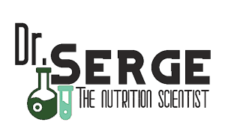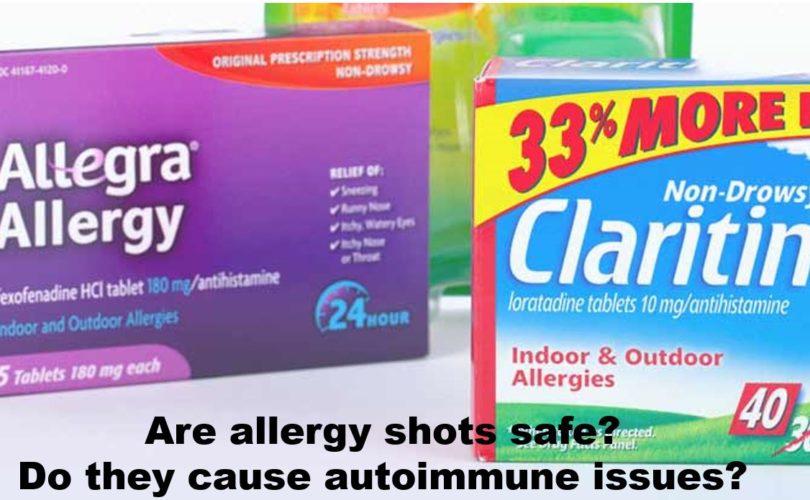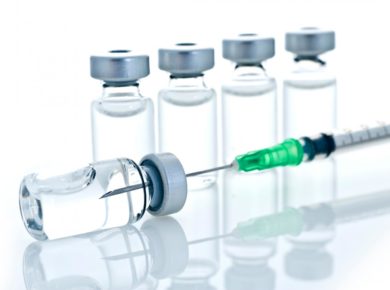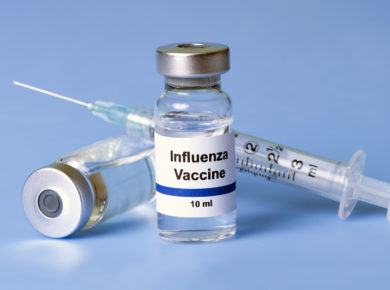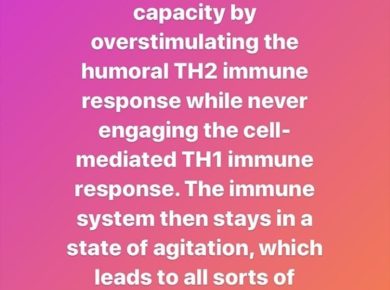It is the allergy season. As many as 50 million people – about one in five – have allergies. Allergies are the sixth leading cause of chronic illness among Americans and cost the U.S. economy more than $18 billion annually!
One of the ways that medical doctors use to treat allergies is allergy shots.
But the concerning part is that allergy shots work like a vaccine.
The American Academy of Allergy, Asthma & Immunology (AAAAI) explains:
Your body responds to injected amounts of a particular allergen, given in gradually increasing doses, by developing immunity or tolerance to the allergen.
Allergy shots, also known as allergy immunotherapy or subcutaneous immunotherapy, have been described as “vaccines for allergy” or “vaccines for allergic diseases.”
According to a study in the journal Current Opinion in Immunology, “Vaccines aim to establish or strengthen immune responses but are also effective for the treatment of allergy.
Allergy shots contain a small amount of an allergen (a substance that triggers an allergic reaction)—just enough to stimulate the immune system without causing a “full-blown allergic reaction.
The goal is to gradually desensitize the immune system and allow it to build up a tolerance to the allergen(s) and eventually minimize or eliminate the allergic symptoms.
The overall principle for vaccines is simila; only that vaccination generally focuses on stimulating a mild immune response to a certain infection-causing antigen such as a bacteria or virus.
As with vaccinations, there are side-effects associated with allergy shots. There are mild side-effects such as swelling or redness at the injection site, itching, watery eyes, stuffy nose, and sneezing.
And there are more severe ones such as rapid or irregular heartbeat, tightness in the chest or throat, difficulty breathing or wheezing, dizziness or light-headedness, loss of consciousness, and death.
Allergy shots contain concentrations of either glycerol or phenol diluents (substances used to thin or dilute), which double as antimicrobial agents or preservatives.
Phenol or carbolic acid is derived from the distillation of coal tar and is an extremely poisonous compound that is used in a highly diluted form as an anti-microbial in vaccines and other products
It is an ingredient in five vaccines licensed in the United States, including Hib (PedvaxHIB), Hib/Hep B (Comvax), Pneumococcal (PPSV-23—Pneumovax), Smallpox (Vaccinia—ACAM2000), and Typhoid (inactivated—Typhim Vi).
Although the safety record of injected phenol is unclear, phenol has been known to have a “toxic chemical effect on the central nervous system leading to sudden collapse and loss of consciousness.”
Allergy shots also contain the blood plasma protein known as human serum albumin (HSA), which is used as a stabilizer. HSA has been known to cause anaphylaxis, described by the AAAAI as a ”serious, life-threatening allergic reaction.”
But here’s the real kicker. Allergy shots can contain aluminum as an adjuvant. Same as with vaccines, only perhaps much more aluminum per shot and cumulatively, given that allergy shots are given more frequently (often weekly or monthly) than vaccines.
What we don’t know is how many people are suffering from the side-effects of the allergy shots they take and what the economic costs are of that treatment.
But you may not know that most allergy shots can contain aluminum as an adjuvant, like vaccines.
But expose patients to even higher levels because of the frequency that allergy shots are given. I have had patients who would get shot every week, sometimes a few times a week for months!
More and more research studies are linking aluminum to the ever growing rates of chronic illness, autoimmune issues, and neurological disorders now prevalent in developed countries, particularly the United States. Aluminum has no reason to be inside the body and is well known to be toxic.
And when injected, our bodies cannot filter out the known toxin. As the study below explains, injection absorption rates are near 100% versus .1-.3% for aluminum taken in through ingestion (in food or drinks).
The study states: “This includes a difference in absorption (100% of aluminum absorbed via the parenteral route versus 0.1–3% via the gastrointestinal route.”
The study is: “Aluminium in allergen-specific subcutaneous immunotherapy – A German perspective”. Vaccine, 2014
Another study states the following (Aluminium adjuvants and adverse events in sub-cutaneous allergy immunotherapy. Allergy, Asthma & Clinical Immunology, 2014.):
“Aluminium will accumulate in the human body over the lifetime of an individual and undoubtedly has the potential to exert chronic toxic effects, such as neurotoxicity. Predisposing an individual to an unnecessary high body burden of aluminum should be avoided and could reasonably be considered a cause for triggering the onset or progression of several conditions and disease states mentioned in this paper [autoimmune disease, neurological disorders such as dementia and Alzheimer’s].”
“Numerous injections with higher proportions of aluminum-adjuvant per injection (in comparison to vaccines) are applied in subcutaneous immunotherapy and will significantly contribute to a higher cumulative life dose of aluminum. While the human body may cope robustly with a daily aluminum overload from the environment, regulatory cumulative threshold values in immunotherapy need further addressing. Based on the current literature, predisposing an individual to an unusually high level of aluminum, such as through subcutaneous immunotherapy, has the potential to form focal accumulations in the body with the propensity to exert forms of toxicity.”
According to Christopher Exley, Ph.D., professor of bioinorganic chemistry at Keele University in the United Kingdom in this 2014 study:
“Aluminium-based adjuvants are the most commonly used adjuvant in subcutaneous allergy immunotherapy. Approximately 75% of all such adjuvant-based therapies include an aluminum salt. In parallel with the use of aluminum-based adjuvants in vaccinations these adjuvants have been in use in allergy immunotherapies for over 80 years.
There are very few data purporting to the safety of aluminum adjuvants in allergy immunotherapy and particularly so in relation to longer-term health effects.” adds Dr. Exley, one of the leading world experts on aluminum.
The irony in all this is allergy shots do not work for the great majority of people. I have seen countless people used them without any success. On the other side, I have observed that those people developed chronic autoimmune issues overtime because of aluminum poisoning.
The key to get rid of allergies is to address the nutritional component to it. Eliminate sugar, wheat, milk and focus on organic, fresh foods.
